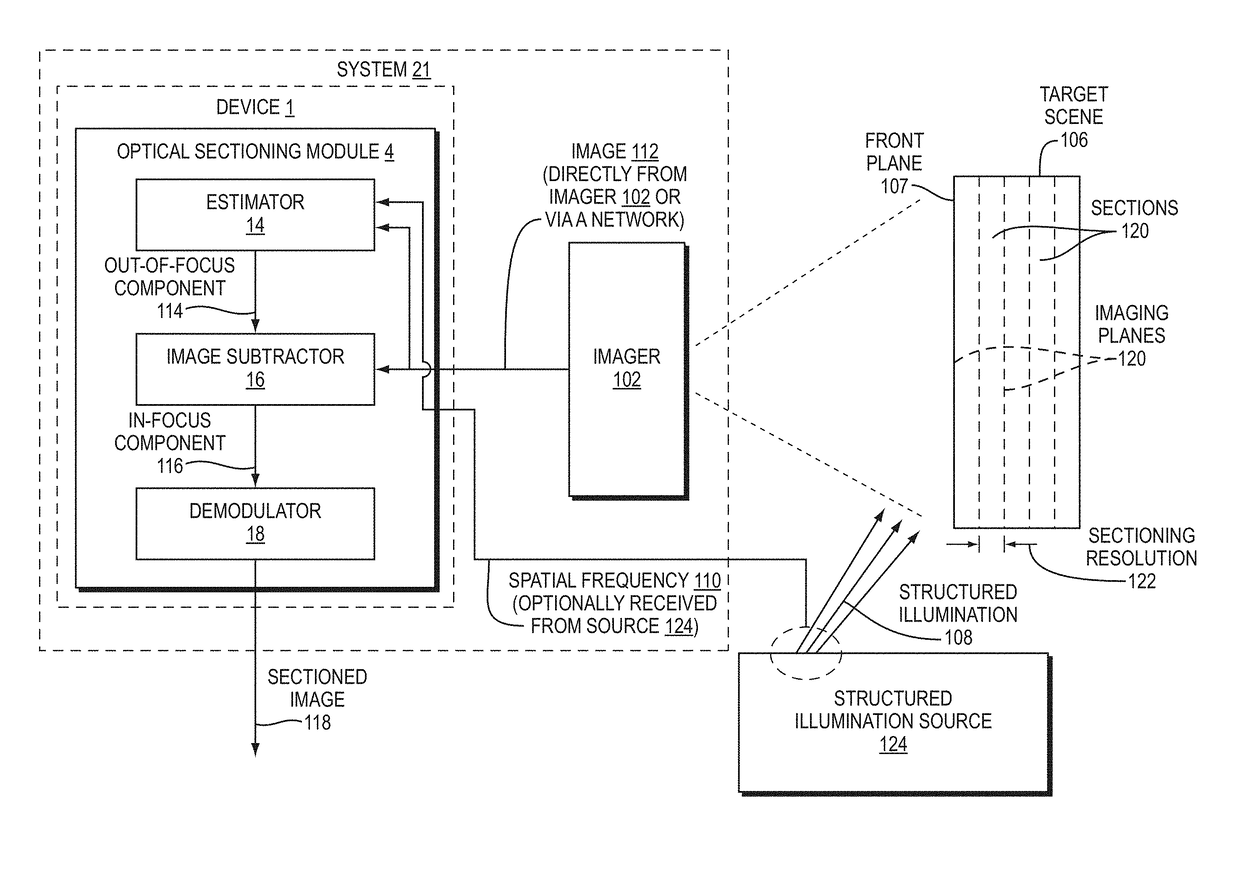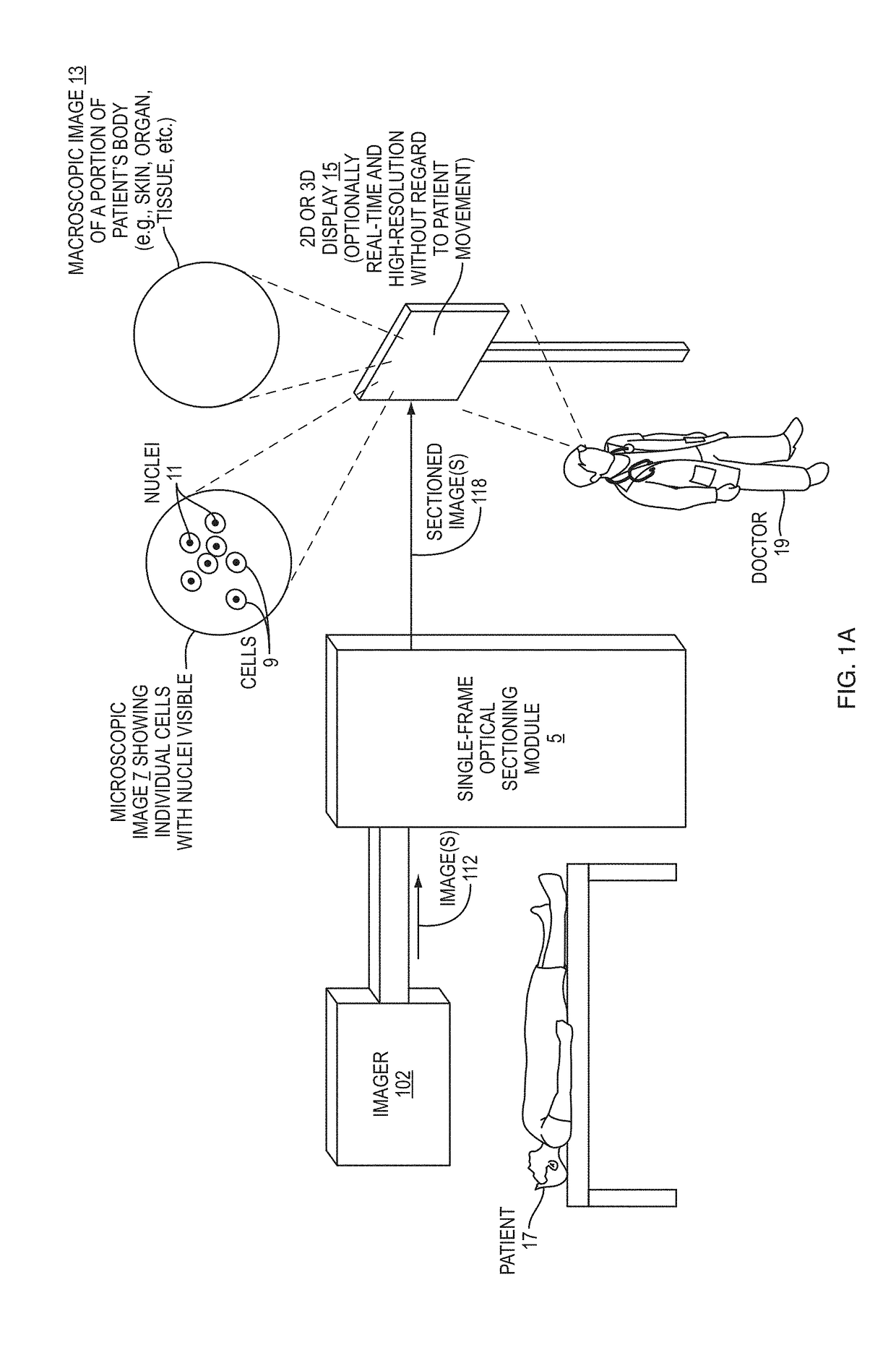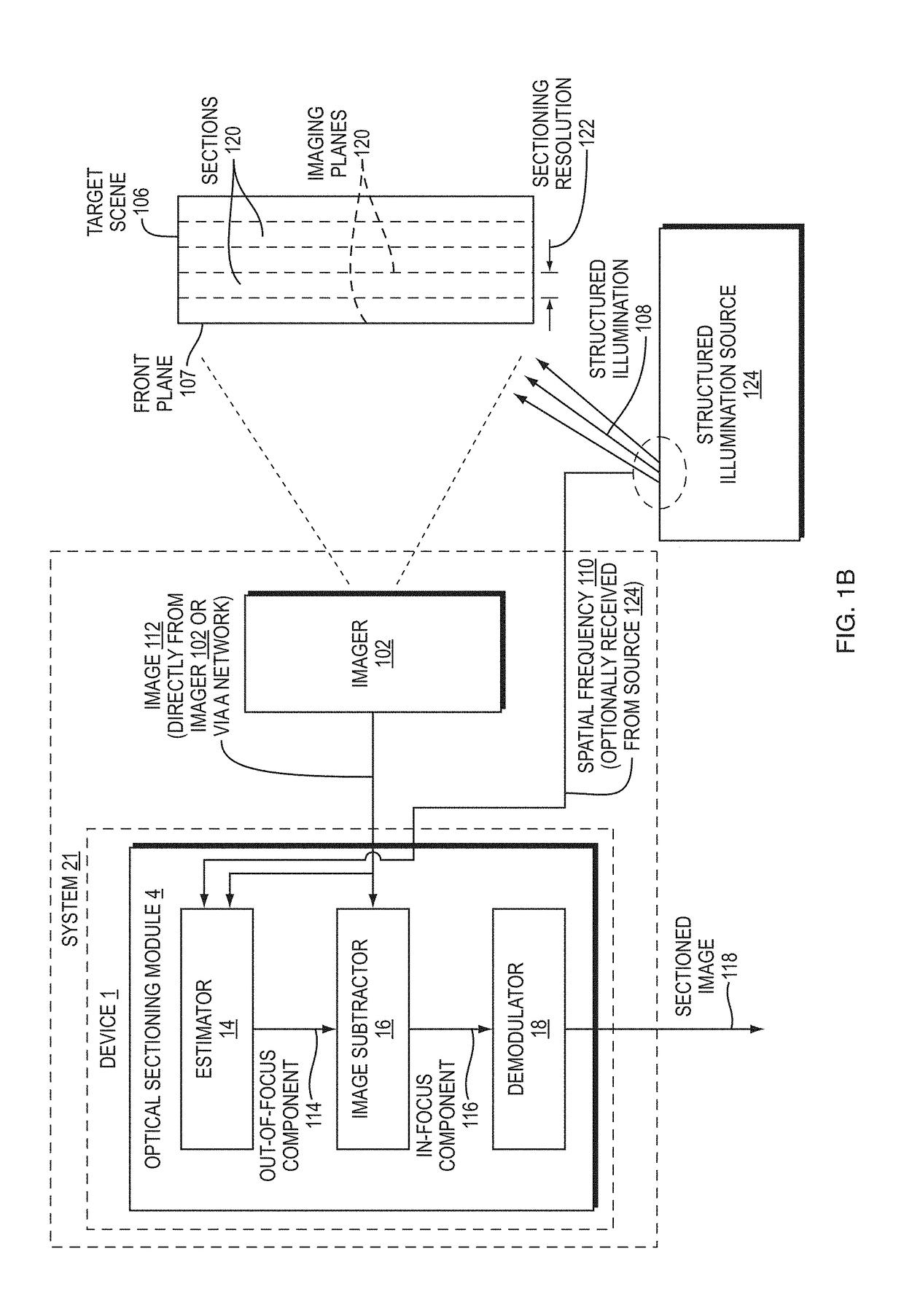Methods, Systems, and Devices for Optical Sectioning
- Summary
- Abstract
- Description
- Claims
- Application Information
AI Technical Summary
Benefits of technology
Problems solved by technology
Method used
Image
Examples
Embodiment Construction
[0045]A description of example embodiments follows.
[0046]Disclosed herein are embodiment methods, systems, and devices that enable confocal-like optical sectioning in real time. A single N×M pixel sample may be used to produce an optical sectioned image, and imaging may be time-limited only by a frame rate of an imager, such as a CCD camera. Consistent with embodiments, target samples can be sectionally imaged at physiologically relevant timescales, for example. This is in contrast to traditional confocal microscopy and traditional structured illumination, which typically require either sequential scanning of N×M pixels or at least three frames of data, respectively. Disclosed embodiments can also produce more robust sectioning within a turbid medium than a traditional structured illumination.
[0047]Optical sectioning has provided pathologists and clinicians the ability to image biological samples noninvasively at or below a surface of the sample. In example cases such as skin cancer...
PUM
 Login to View More
Login to View More Abstract
Description
Claims
Application Information
 Login to View More
Login to View More - R&D
- Intellectual Property
- Life Sciences
- Materials
- Tech Scout
- Unparalleled Data Quality
- Higher Quality Content
- 60% Fewer Hallucinations
Browse by: Latest US Patents, China's latest patents, Technical Efficacy Thesaurus, Application Domain, Technology Topic, Popular Technical Reports.
© 2025 PatSnap. All rights reserved.Legal|Privacy policy|Modern Slavery Act Transparency Statement|Sitemap|About US| Contact US: help@patsnap.com



